Potrebujeme váš súhlas na využitie jednotlivých dát, aby sa vám okrem iného mohli ukazovať informácie týkajúce sa vašich záujmov. Súhlas udelíte kliknutím na tlačidlo „OK“.
ASTM D7169-11
Standard Test Method for Boiling Point Distribution of Samples with Residues Such as Crude Oils and Atmospheric and Vacuum Residues by High Temperature Gas Chromatography
Automaticky preložený názov:
Štandardná skúšobná metóda pre Boiling Point distribúcie vzoriek sa zvyšky, ako sú oleje a atmosféry a vákuových zvyškov vysokou teplotou plynovej chromatografie
NORMA vydaná dňa 1.5.2011
Informácie o norme:
Označenie normy: ASTM D7169-11
Poznámka: NEPLATNÁ
Dátum vydania normy: 1.5.2011
Kód tovaru: NS-37744
Počet strán: 17
Približná hmotnosť: 51 g (0.11 libier)
Krajina: Americká technická norma
Kategória: Technické normy ASTM
Kategórie - podobné normy:
Anotácia textu normy ASTM D7169-11 :
Keywords:
boiling point distribution, crude oils, cut point intervals, distillation residues, lubricants, residues, simulated distillation: Boiling point, Crude oil, Gas chromatography (GC)--petroleum products, Residue--petroleum products, ICS Number Code 71.040.50 (Physicochemical methods of analysis)
Doplňujúce informácie
| Significance and Use | ||||||||||||||||
|
The determination of the boiling point distribution of crude oils and vacuum residues, as well as other petroleum fractions, yields important information for refinery operation. These boiling point distributions provide information as to the potential mass percent yield of products. This test method may provide useful information that can aid in establishing operational conditions in the refinery. Knowledge of the amount of residue produced is important in determining the economics of the refining process. |
||||||||||||||||
| 1. Scope | ||||||||||||||||
|
1.1 This test method covers the determination of the boiling point distribution and cut point intervals of crude oils and residues by using high temperature gas chromatography. The amount of residue (or sample recovery) is determined using an external standard. 1.2 This test method extends the applicability of simulated distillation to samples that do not elute completely from the chromatographic system. This test method is used to determine the boiling point distribution through a temperature of 720°C. This temperature corresponds to the elution of n-C100. 1.3 This test method is used for the determination of boiling point distribution of crude oils. This test method uses capillary columns with thin films, which results in the incomplete separation of C4-C8 in the presence of large amounts of carbon disulfide, and thus yields an unreliable boiling point distribution corresponding to this elution interval. In addition, quenching of the response of the detector employed to hydrocarbons eluting during carbon disulfide elution, results in unreliable quantitative analysis of the boiling distribution in the C4-C8 region. Since the detector does not quantitatively measure the carbon disulfide, its subtraction from the sample using a solvent-only injection and corrections to this region via quenching factors, results in an approximate determination of the net chromatographic area. A separate, higher resolution gas chromatograph (GC) analysis of the light end portion of the sample may be necessary in order to obtain a more accurate description of the boiling point curve in the interval in question (see Appendix X1). 1.4 This test method is also designed to obtain the boiling point distribution of other incompletely eluting samples such as atmospheric residues, vacuum residues, etc., that are characterized by the fact that the sample components are resolved from the solvent. 1.5 This test method is not applicable for the analysis of materials containing a heterogeneous component such as polyesters and polyolefins. 1.6 The values stated in inch-pound units are to be regarded as standard. The values given in parentheses are mathematical conversions to SI units that are provided for information only and are not considered standard. 1.7 This standard does not purport to address all of the safety concerns, if any, associated with its use. It is the responsibility of the user of this standard to establish appropriate safety and health practices and determine the applicability of regulatory limitations prior to use. Specific warning statements are given in Section 8. |
||||||||||||||||
| 2. Referenced Documents | ||||||||||||||||
|
Podobné normy:
Historická
1.12.2012
Historická
1.9.2008
Historická
1.2.2014
Historická
1.9.2009
Historická
1.3.2011
Historická
1.7.2011



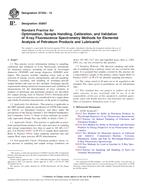 ASTM D7343-12
ASTM D7343-12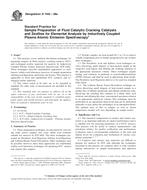 ASTM D7442-08a
ASTM D7442-08a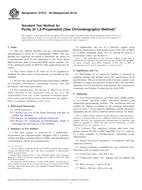 ASTM D7515-09(2014)..
ASTM D7515-09(2014)..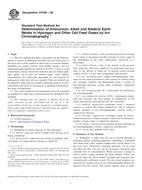 ASTM D7550-09
ASTM D7550-09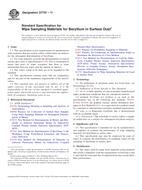 ASTM D7707-11
ASTM D7707-11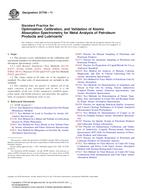 ASTM D7740-11
ASTM D7740-11
 Cookies
Cookies
